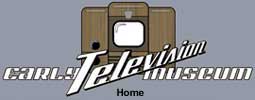Early Television What is a Guinea ?The coinage used in Victorian Britain had been much the same for three hundred years and was based on a system which had existed for more than a millennium. It lasted until 1971 when the currency was finally decimalized and the pound was divided into 100 smaller units. Similar changes were made to the currency in Ireland and several Commonwealth countries which still used Britain's ancient coinage system. In Britain the pound Sterling was (and is) the central unit of money. Prior to decimalization the pound was divided into twenty shillings and each shilling was divided into twelve pennies or pence. Although those divisions may seem odd, in fact having a pound divided into 240 equal parts does mean it can be exactly divided into halves, thirds, quarters, fifths, sixths, eighths, tenths, twelfths, fifteenths, sixteenths, twentieths, twenty-fourths, thirtieths, fortieths, forty-eightieths, sixtieths, eightieths, and one-hundred-and-twentieths. A decimal system allows precise division only into halves, quarters, fifths, tenths, twentieths, twenty-fifths, and fiftieths. A guinea was £1-1s-0d (which is £1.05) and could be written as '1g' or '1gn' or, in the plural, '3gs' or '3gns'. It was considered a more gentlemanly amount than £1. You paid tradesmen, such as a carpenter, in pounds but gentlemen, such as an artist, in guineas. It was a tradition in the legal profession that a barrister was paid in guineas but kept only the pounds, giving his clerk the shillings (they were all men then). In the 1850s and 60s the standard rate paid by Dickens for contributions to his weekly periodicals Household Words and All The Year Round was half a guinea a column or a guinea a page. His staff members were generally paid five guineas a week. In the early 1850s, before he worked for Dickens, Wilkie Collins was paid five-eighths of a guinea a page for his work in Bentley's Miscellany. That odd amount was worked out from the rate of ten guineas for a printed sheet of sixteen pages. Per word, both amounts were similar. Like the pound, the guinea could also be divided exactly into many different amounts - halves, thirds, quarters, sixths, sevenths, ninths, fourteenths, twenty-firsts, twenty-eighths, thirty-sixths, forty-seconds, sixty-thirds, eighty-fourths, and one-hundred-and-twenty-sixths. One useful factor was that a third of a guinea was exactly seven shillings In the 1930s, the exchange rate was about 5 U.S. dollars to one pound Sterling. Therefore, a guinea was approximately $5.25. |
